A well-composed living room does not rely on expensive renovations. It starts with precise, hands-on ideas that bring visual structure and a sense of refinement. The following DIY projects focus on form, material, and placement. Each is designed to enhance your space through careful execution, offering results that feel both considered and lasting.
1. Upcycled Wood Wall Art
Reclaimed wood can be repurposed into geometric wall features using basic tools and stains. Arrange planks in herringbone, chevron, or abstract layouts for visual impact. Choose pieces in varied tones to add dimension to a flat wall. Use soft lighting to emphasize natural textures. This project suits both single accent walls and larger surfaces. It is often mounted using hidden brackets or construction adhesive.
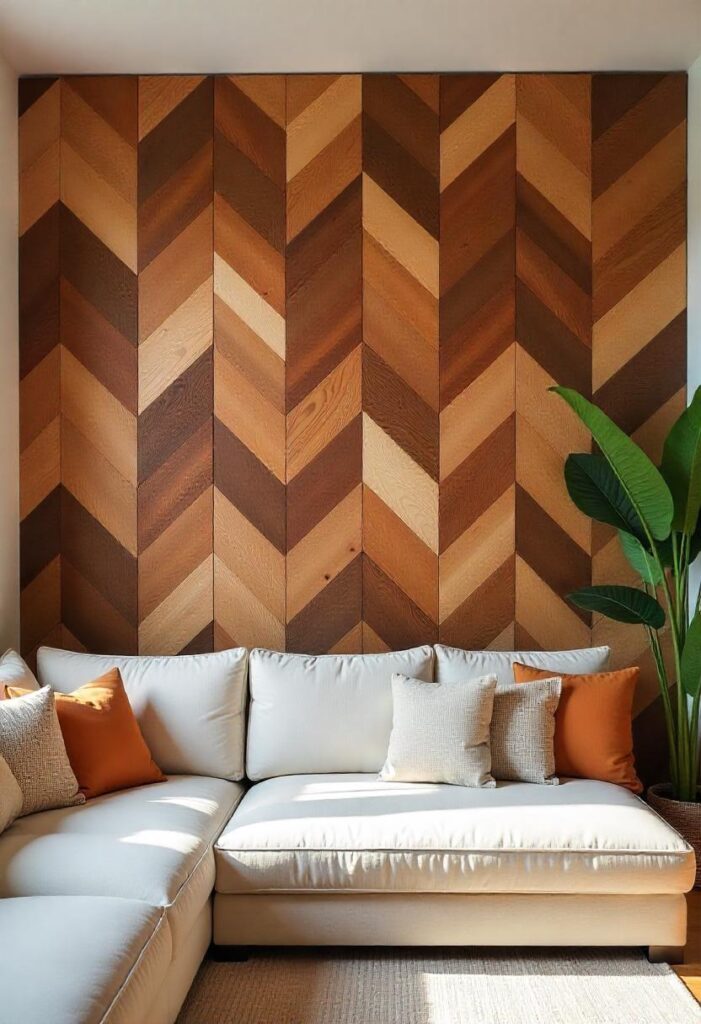
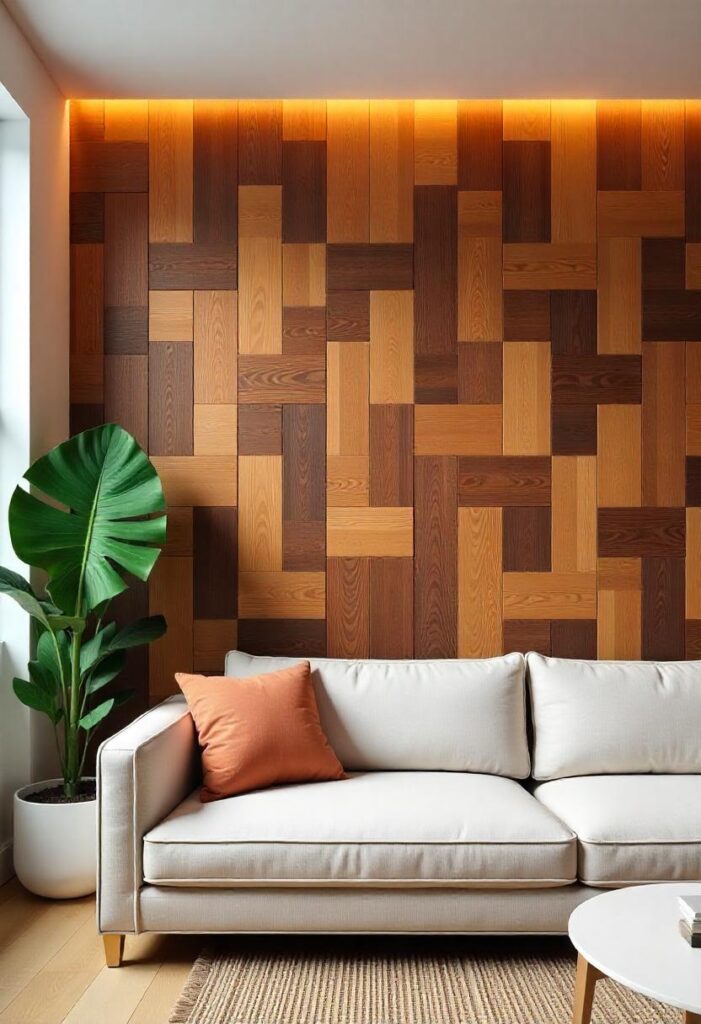
2. Macrame Wall Hanging with a Twist
Macrame can be reimagined with bold yarns, added metallic threads, and layered knots. Install on a wooden dowel and combine both fine and thick cords. Choose thread colors that contrast with your wall for better visual separation. Gold beads or brass rings may be added for structure. These pieces are often hung above low furniture. Keep the size proportional to the wall area for balance.
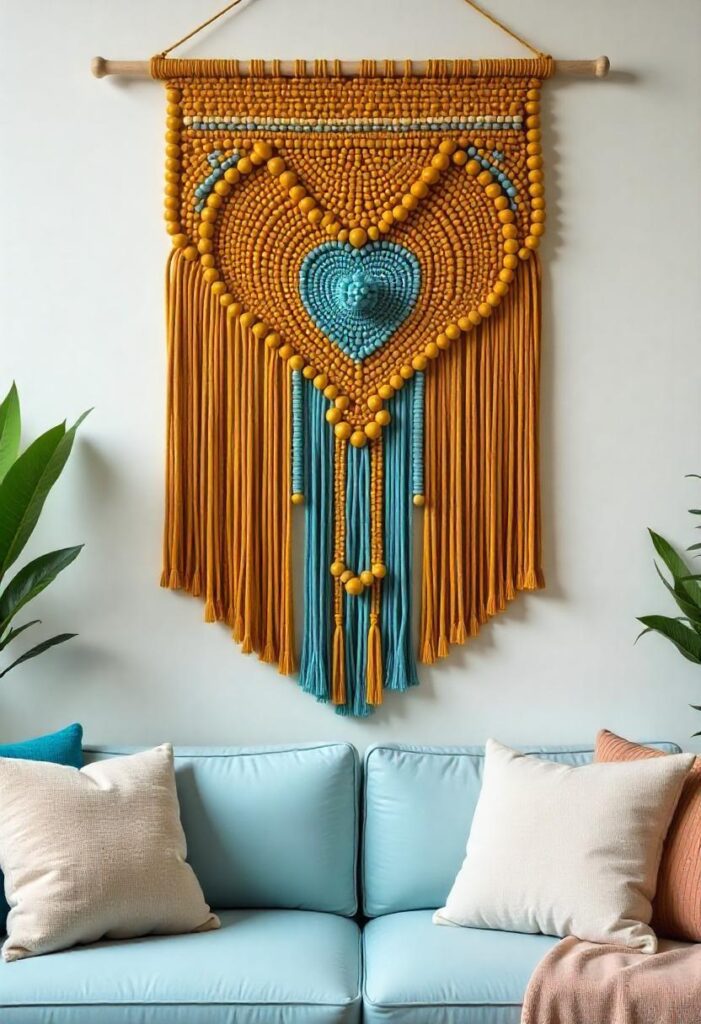
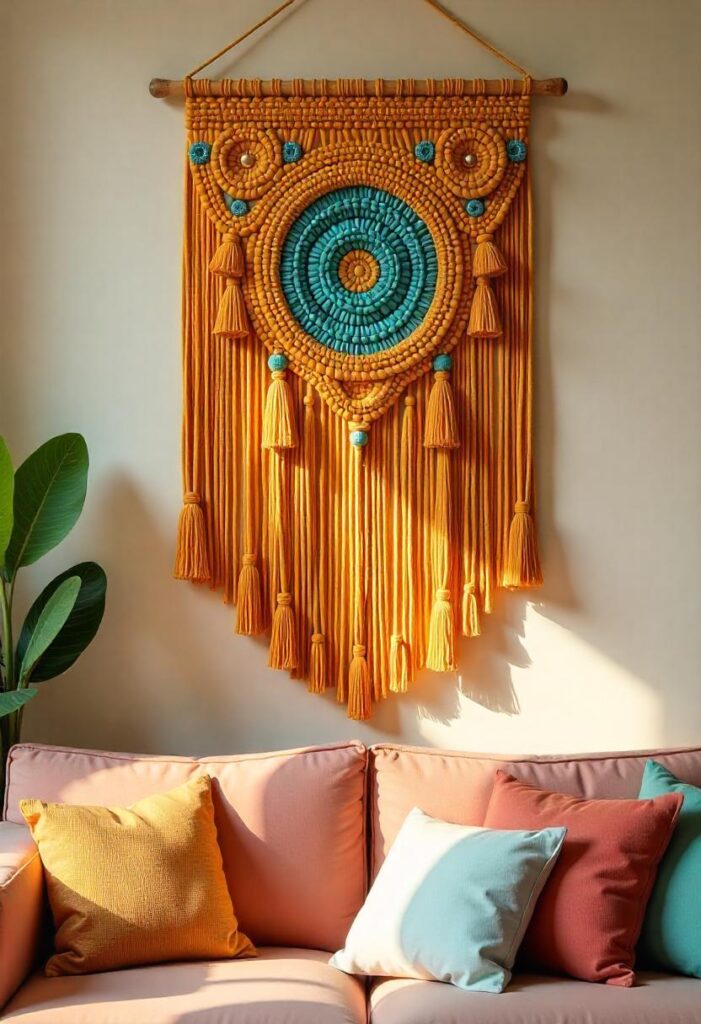
3. DIY Floating Shelf Planter Wall
Floating wooden shelves fixed to the wall can double as display zones for small plants. Vary the height and spacing to avoid repetition. Opt for compact greenery like succulents or vines that drape down over the edges. Using uniform pots enhances visual clarity. Select wall anchors based on the weight of your planters. This setup works well on feature walls or between windows.
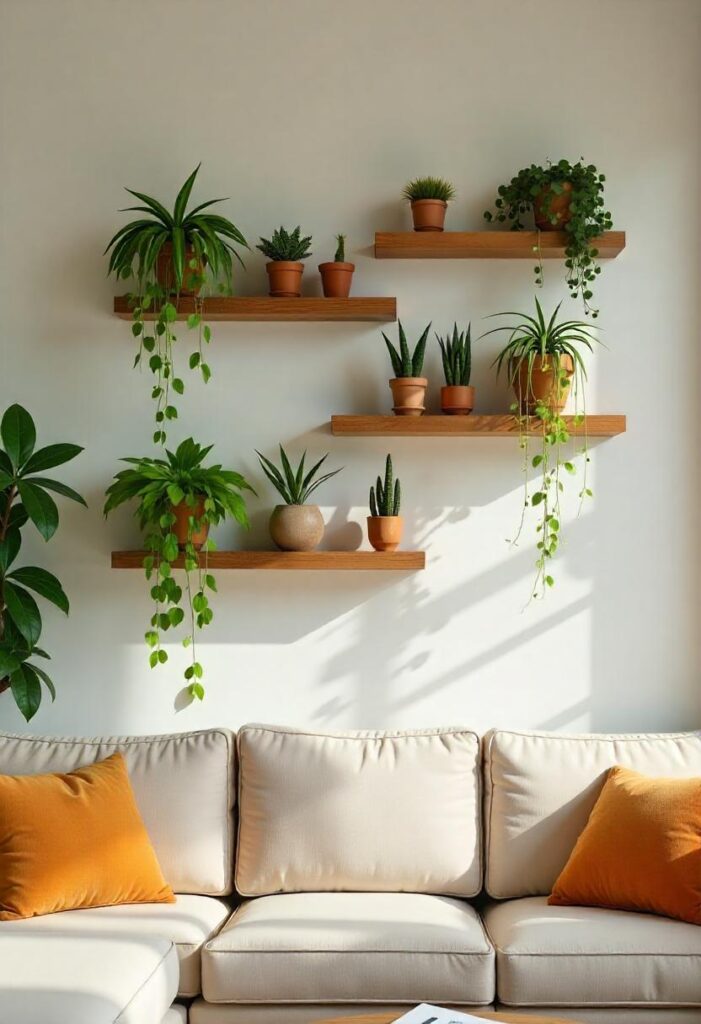
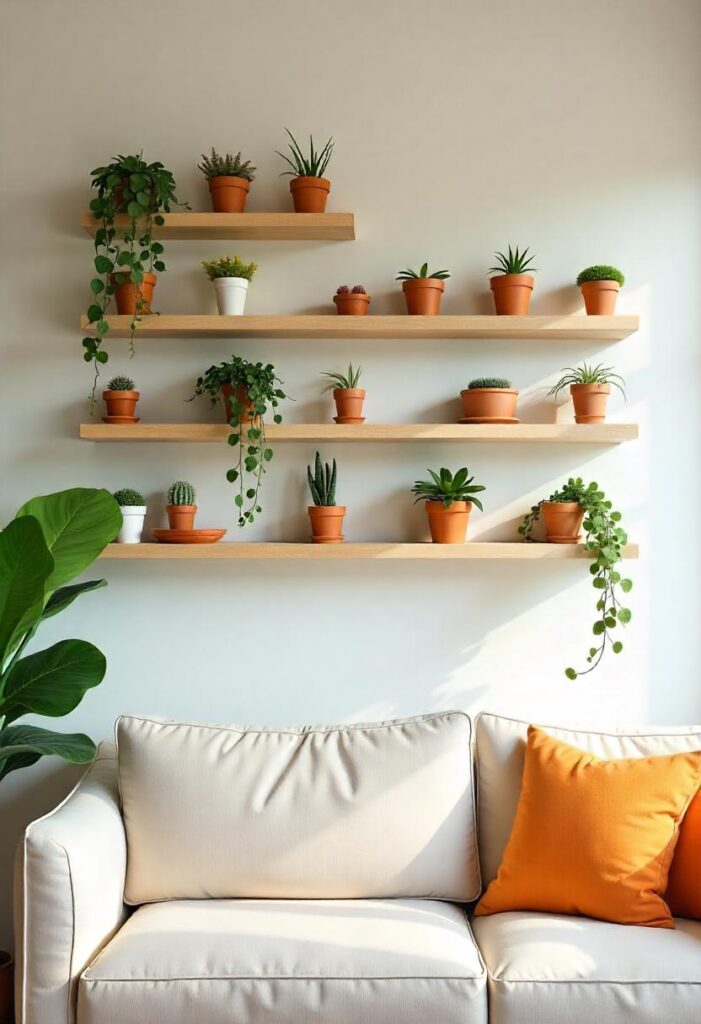
4. Repurposed Ladder Side Table
Old ladders can be transformed into multipurpose side tables using minimal alterations. Clean, sand, and paint the frame to match your interior palette. Horizontal steps act as storage for books or decorative objects. Wall-stabilizing brackets ensure safety if leaned rather than freestanding. Choose a ladder height that aligns with adjacent seating. This solution works well in rooms with limited surface area.
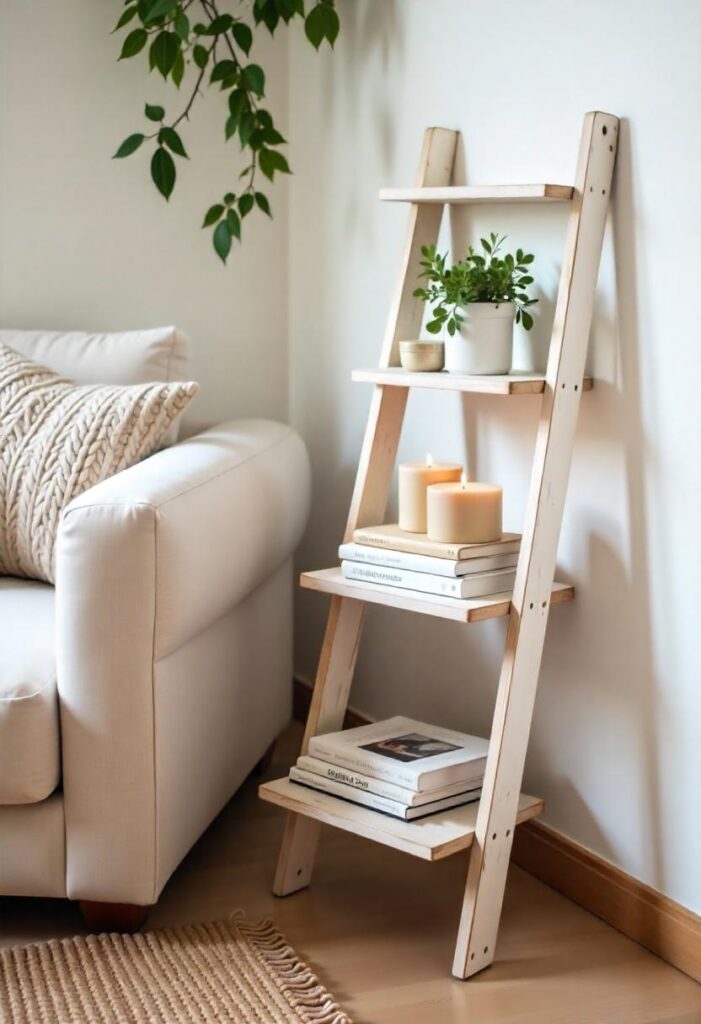
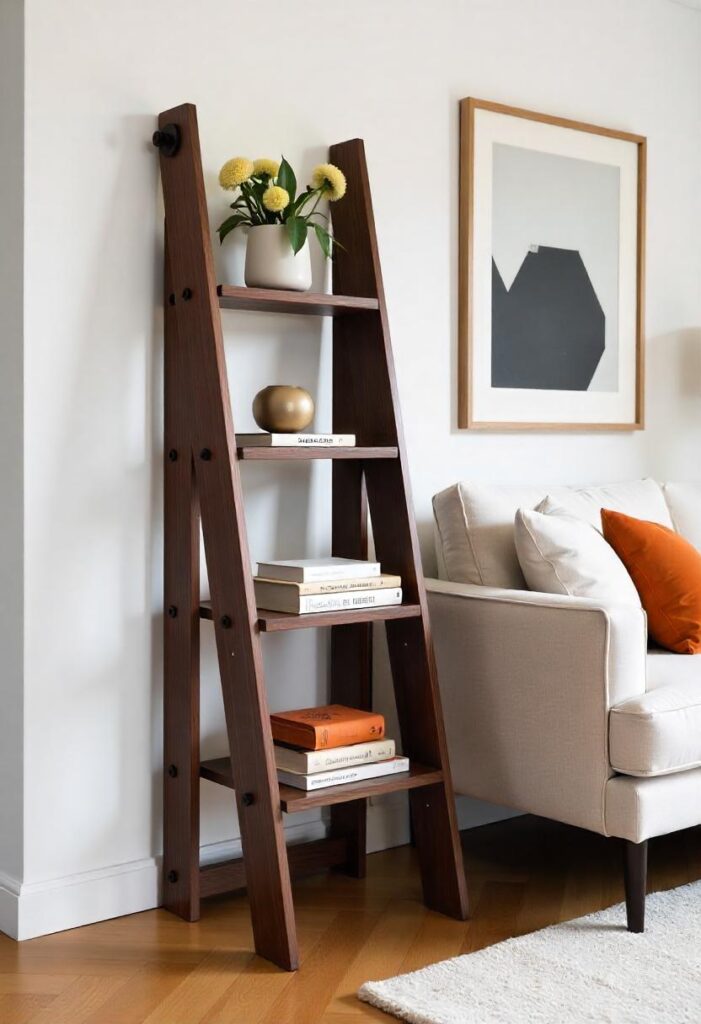
5. Fabric Wall Panels for Texture and Color
Framed fabric panels offer a way to introduce patterns or color blocks without painting. Use wood or metal frames to stretch fabrics such as velvet, canvas, or patterned cotton. Arrange the panels symmetrically or in a staggered format. This method allows easy seasonal or thematic changes. Coordinate fabric tones with key elements in the room. Staple guns and mounting hooks are the usual installation tools.
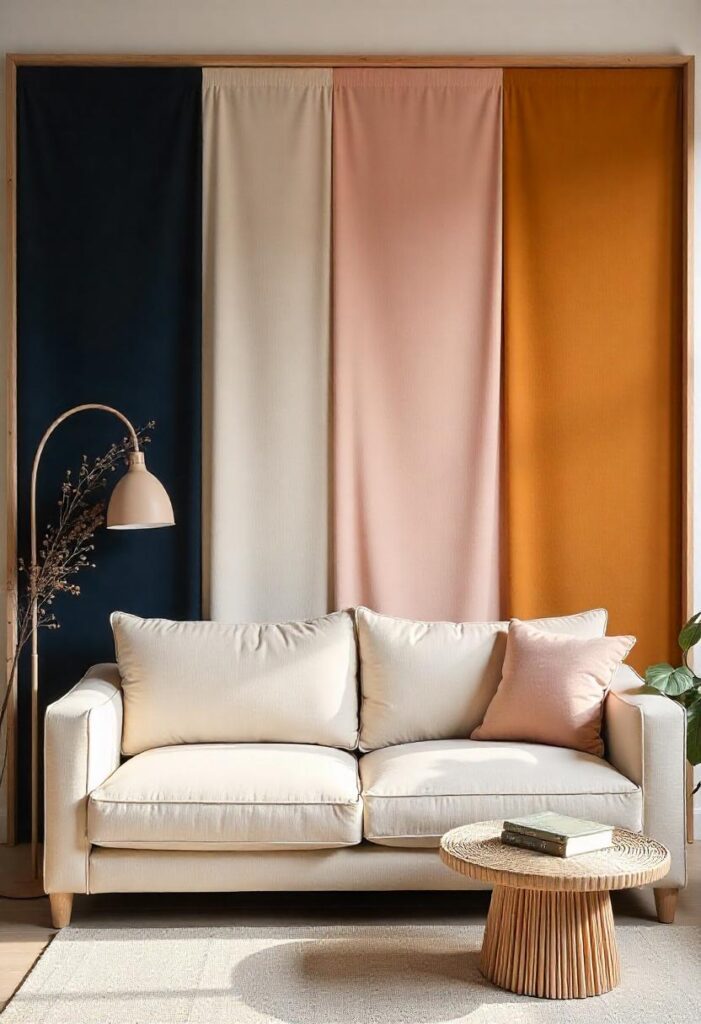
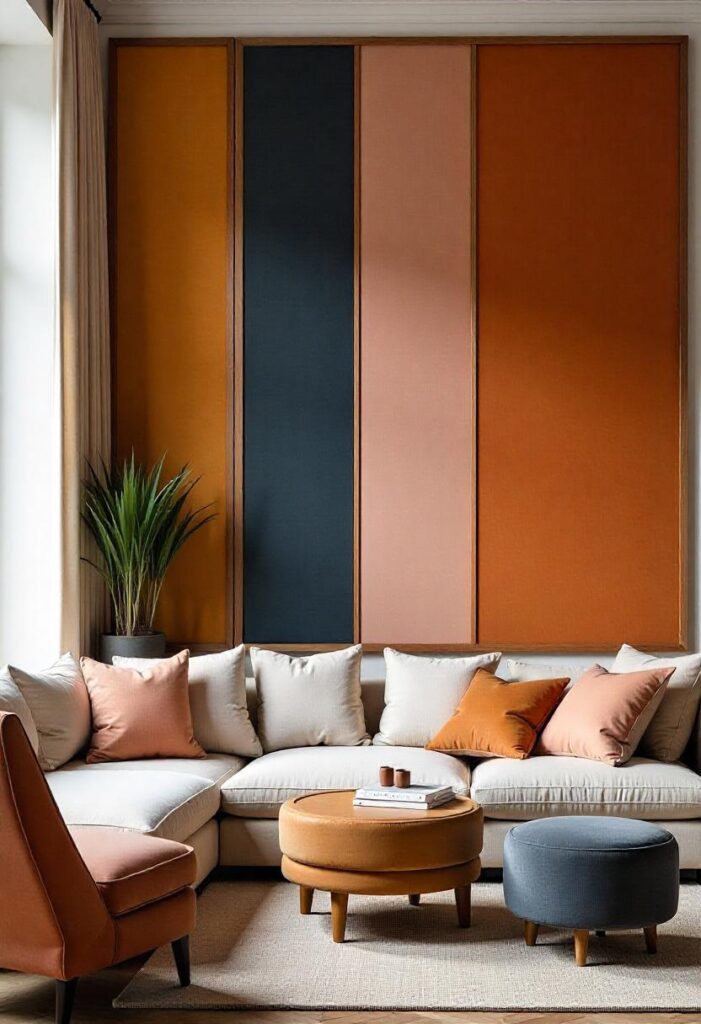
6. Rope-Wrapped Coffee Table
A basic coffee table frame can be updated by wrapping it with thick jute or sisal rope. Start at the base and tightly coil upward for uniform coverage. Secure the ends with industrial adhesive for durability. Round and square shapes both work with this method. Use rope in its natural tone or dye it for added contrast. This idea works best with simple table forms.
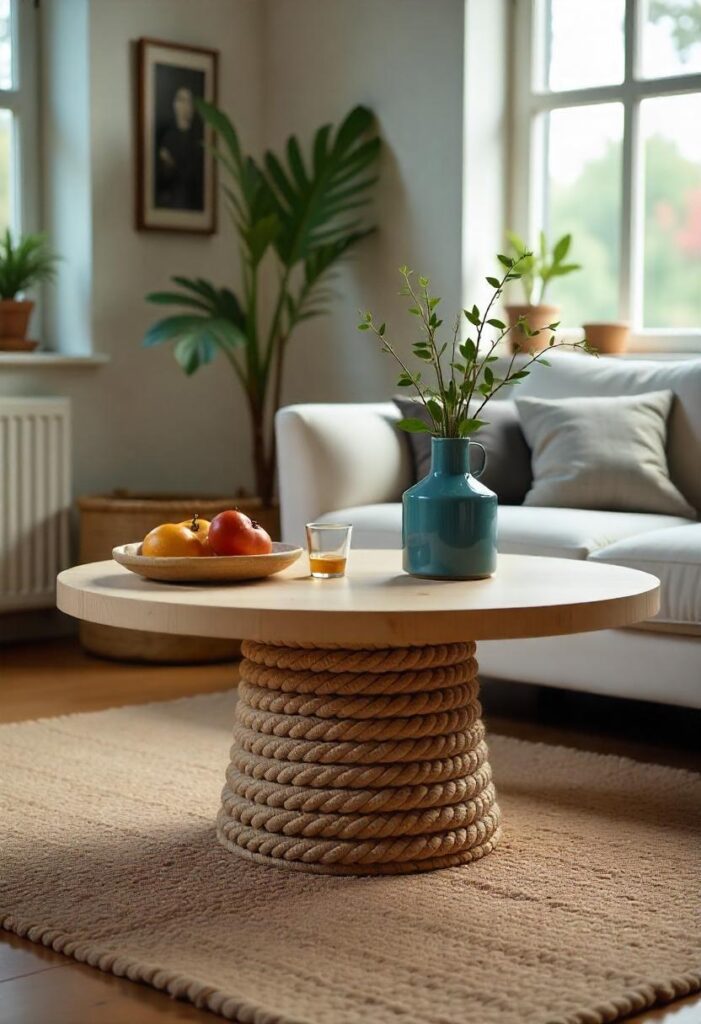
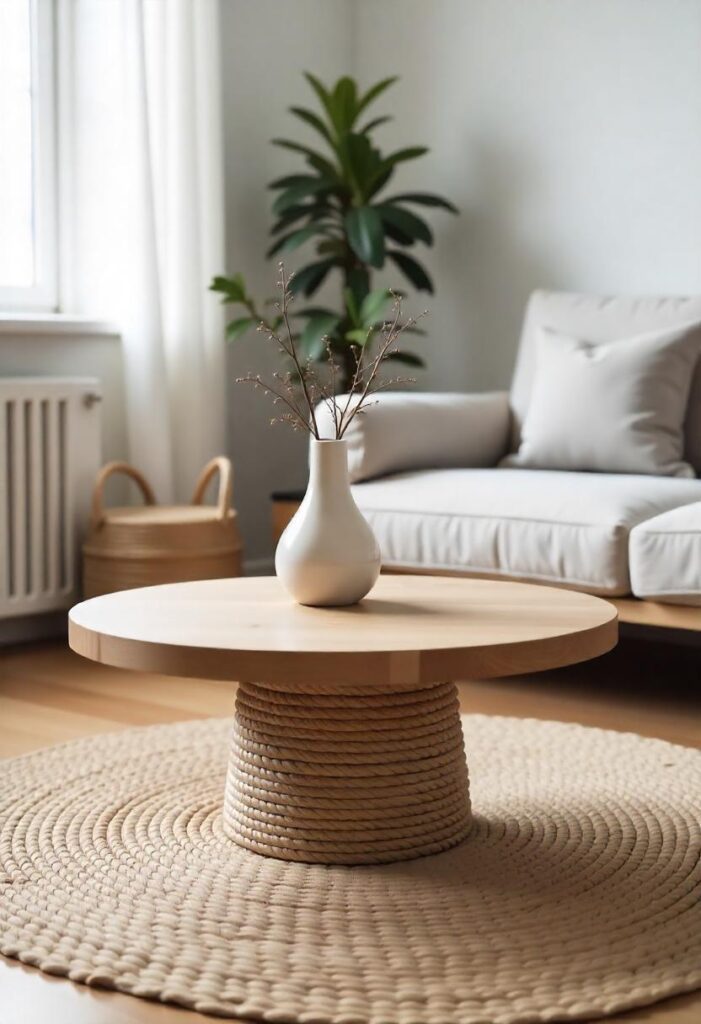
7. DIY Cushion Covers with Personal Touches
Create new cushion covers from repurposed materials like old clothing or scarves. Add embroidery, appliqué, or stitched lettering for visual identity. Include zippers or envelope closures for convenience. Handcrafted patches or fabric paint can be applied to small sections. Mix patterns intentionally, avoiding overly similar prints side by side. Proper measurement and fabric cutting ensures alignment during sewing.
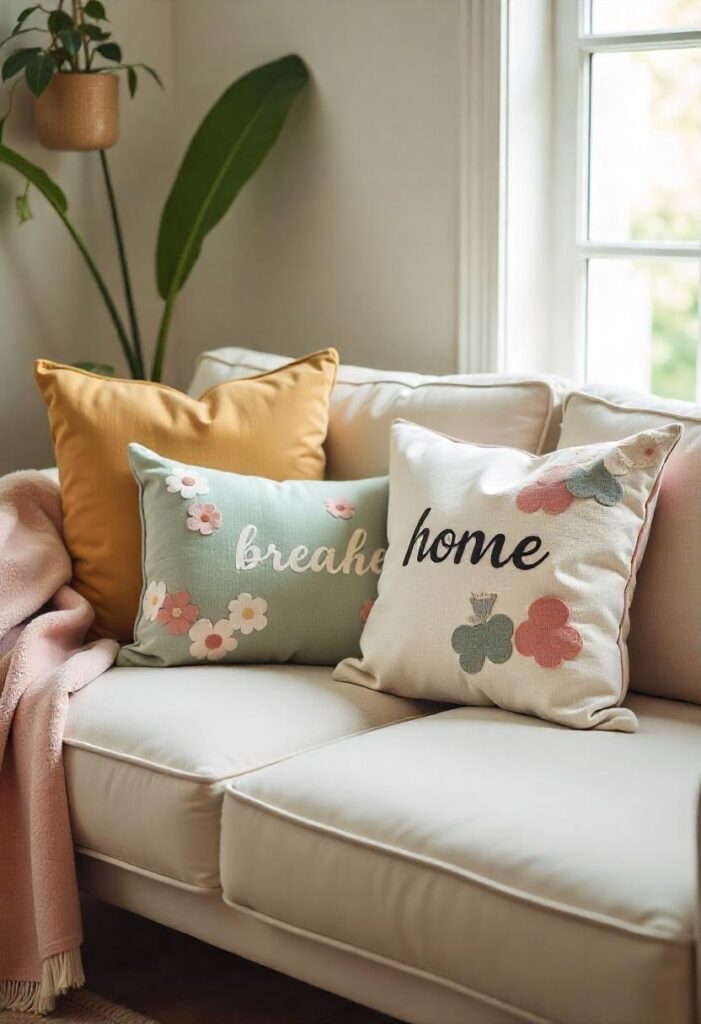
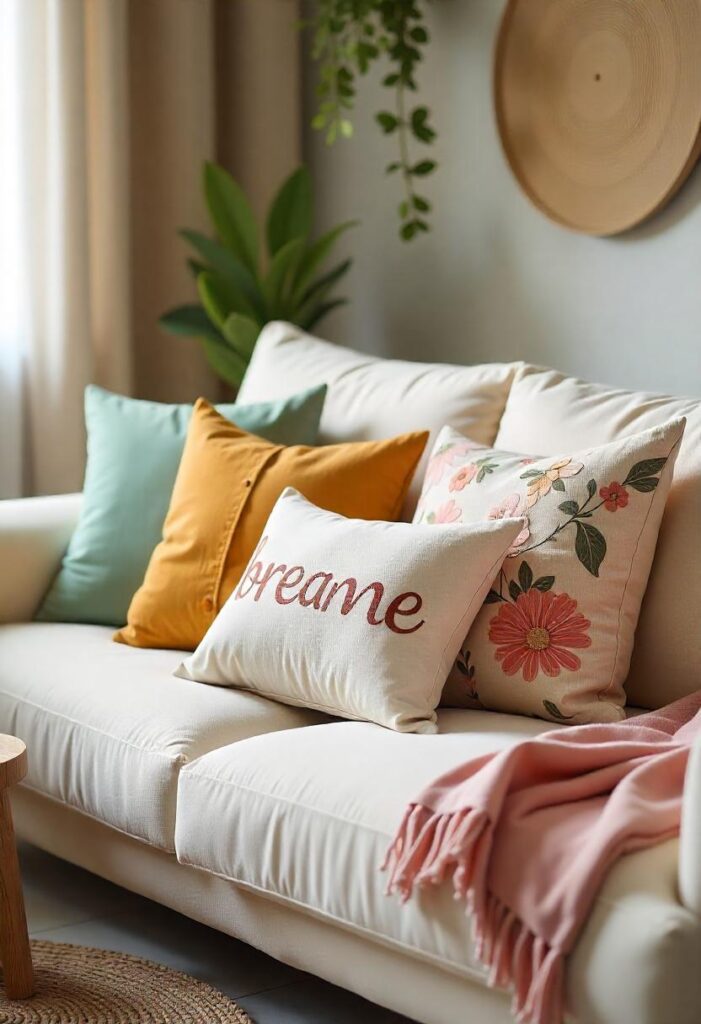
8. Mason Jar Pendant Lights
Mason jars can be converted into ceiling-hung light fixtures with basic wiring kits. Use tinted or frosted glass for diffusion and install Edison-style bulbs for visual depth. Hang at varying heights to create interest in grouped designs. Reinforce the necks of jars with metal brackets or collars to handle the bulb weight. These lights fit well above tables or corners. Ensure electrical safety with tested components.
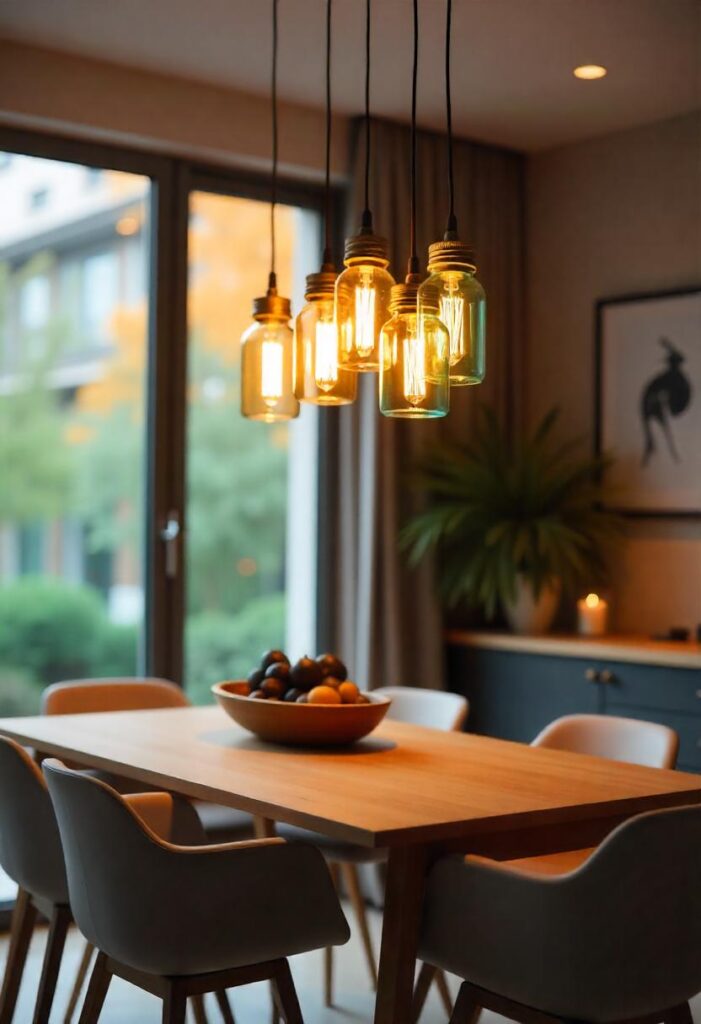
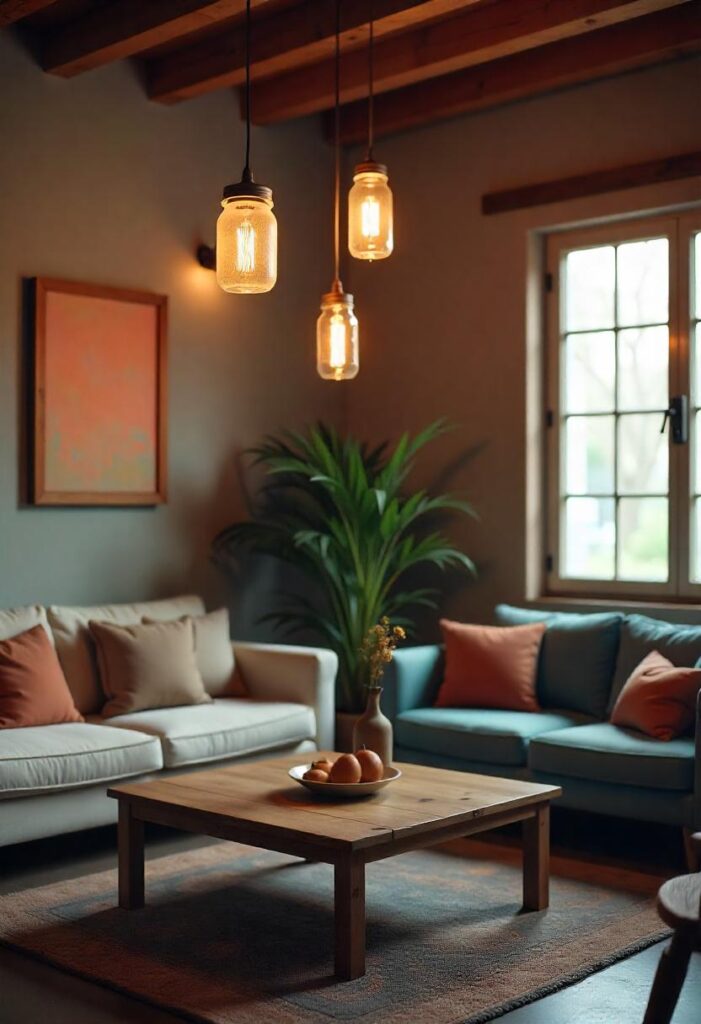
9. Concrete and Copper Side Tables
Create sturdy side tables by combining copper pipes with poured concrete tops. Cut and assemble the pipe frame using elbow joints and secure with adhesive. Mix and pour concrete into a round or square mold for the surface. After curing, polish the top and attach it to the base. Use a matte sealant to maintain the raw appearance. Measure proportions carefully to match existing furniture.
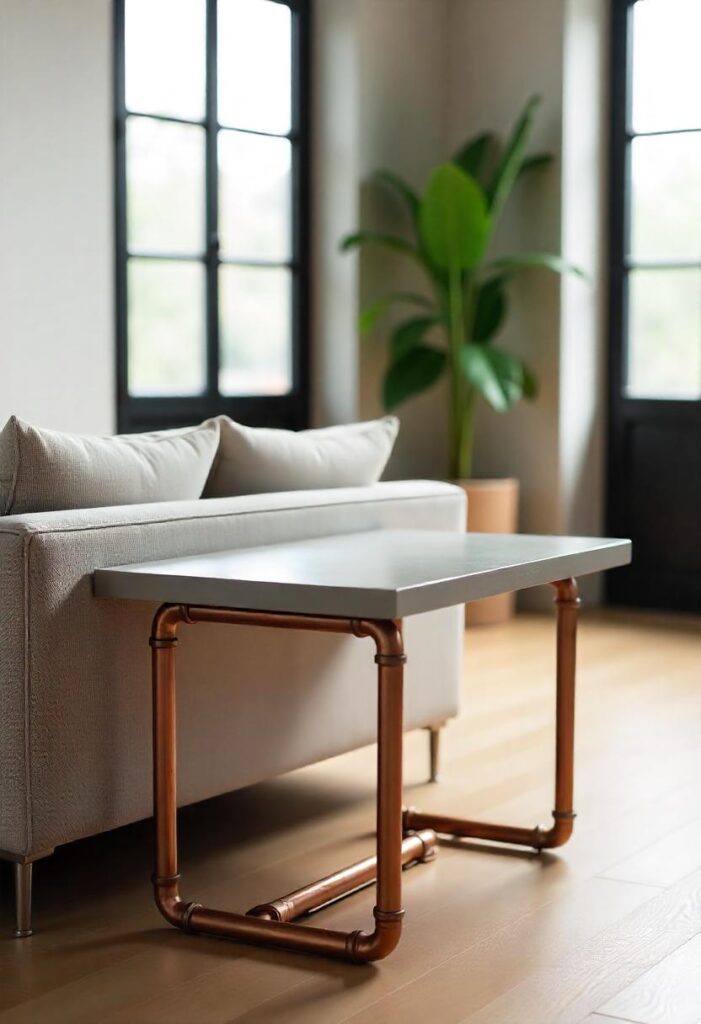
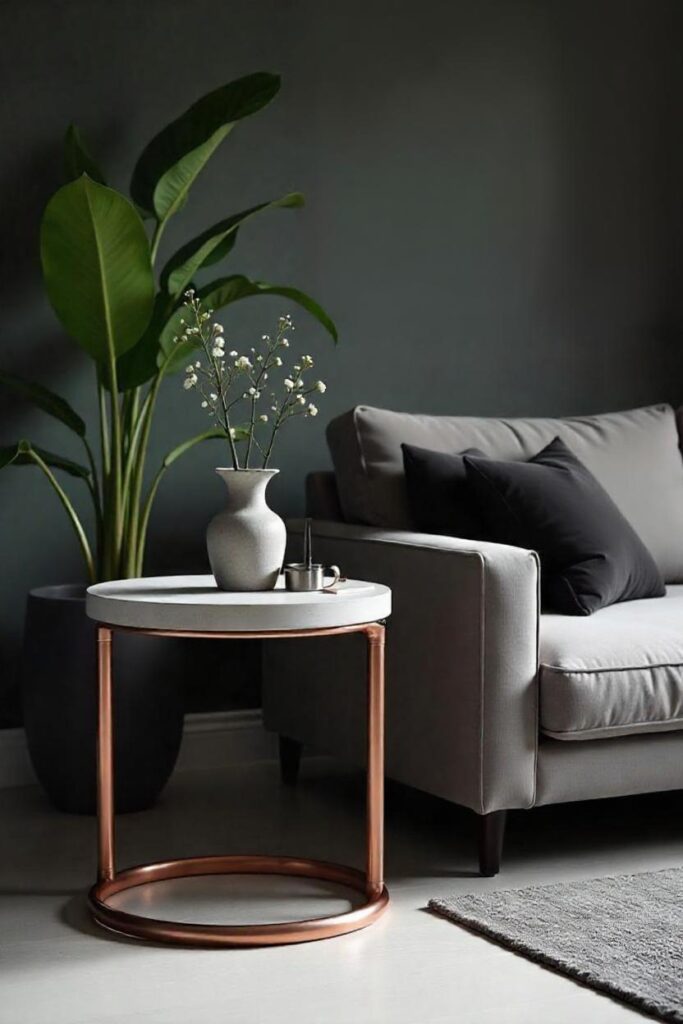
10. Wall-Mounted Magazine Rack with Vintage Frames
Vintage photo frames can be turned into display racks for magazines and art prints. Remove the glass and backing, then attach thin wooden dowels or tension cords. Mount the frames on the wall in aligned rows or a gallery-style grid. Use strong wall anchors to support weight. Paint the frames uniformly or keep them mismatched for contrast. This project is space-efficient and easy to rearrange.
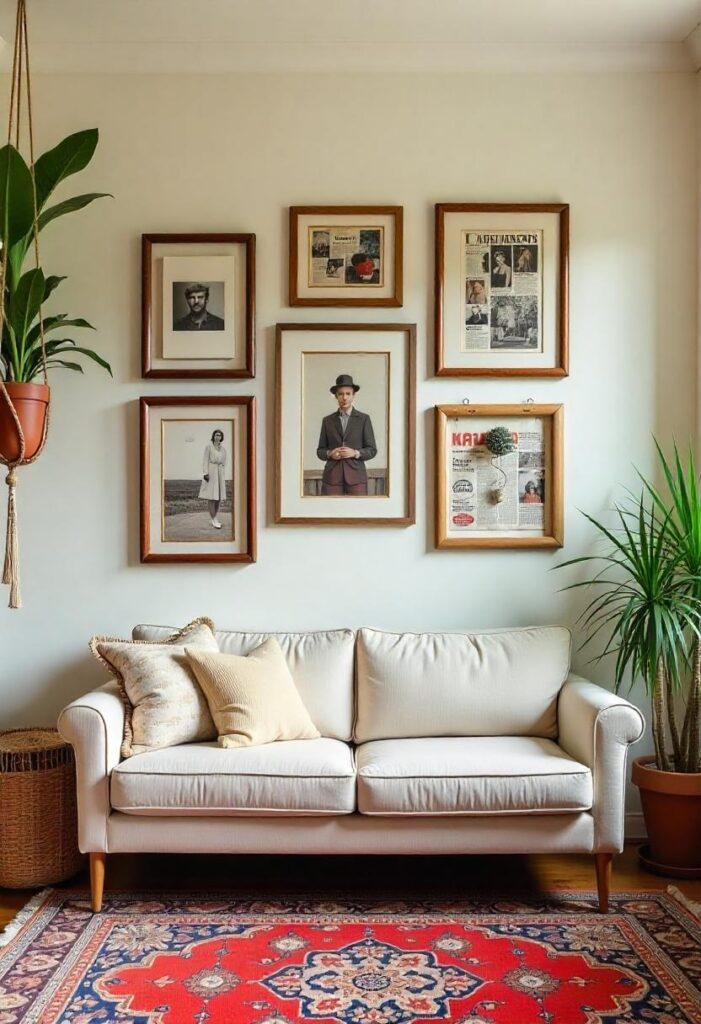
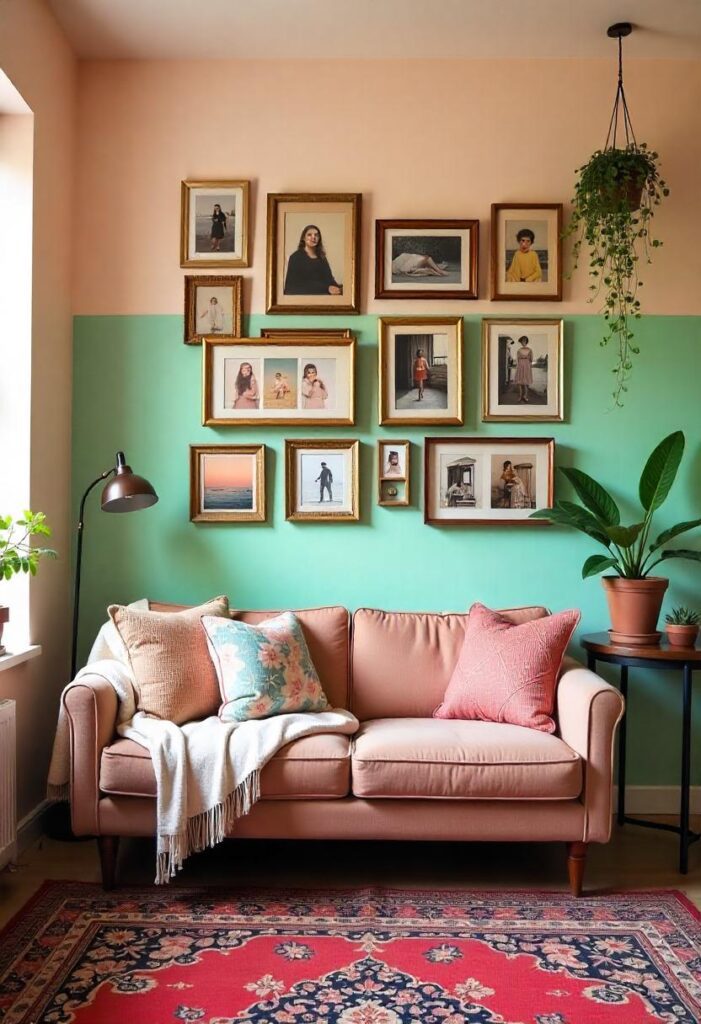
Final Thoughts:
Every space reflects the decisions made within it. These projects allow you to shape your living room with intention and clarity. They do not follow trends. They invite involvement and deliver lasting visual presence. Begin with what fits your space and let it grow from there.
